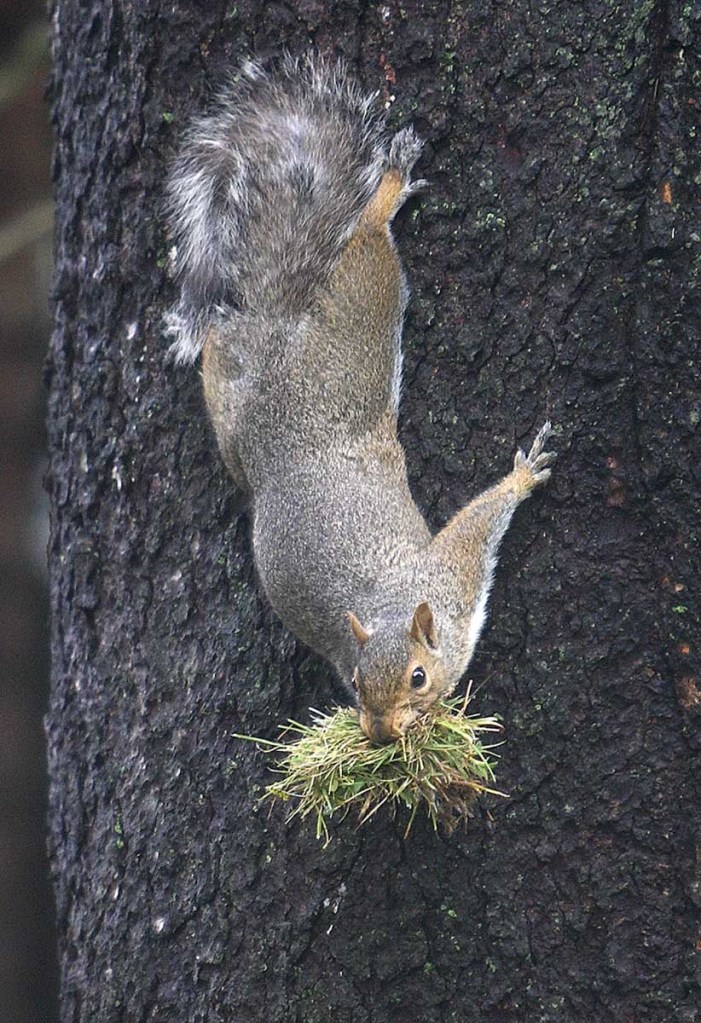Squirrels sinking their teeth into power grid
Published 1:13 pm Saturday, December 26, 2015

- Squirrel
U.S. electric utilities are battling a bushy-tailed, nut-loving menace that has wreaked havoc on far more Christmas tree lights, TVs and cellphone chargers than any terrorist plotting against the power grid.
That’s right. Beware the squirrel.
Even as utilities have spent millions on “wildlife protection,” squirrels routinely outsmart plastic animal guards on energized equipment, gnaw through rubbery insulation and squirm into power substations, zapping electricity to thousands of homes and businesses while meeting untimely deaths.
Storms still tend to cause the longest and most widespread outages, experts say. But the American Public Power Association, which represents municipal electric utilities and uses a “squirrel index” to track outages nationwide, says the critters remain the most frequent cause, even if those outages are more limited than storms.
Washington-area utilities say the number of squirrel-related outages comes in third, behind failing equipment and tree limbs touching power lines but far ahead of weather-related incidents. Birds and animals – namely squirrels – accounted for 9 percent to 21 percent of unplanned outages in the region in 2013 and 2014, according to utility reports.
“They’re very difficult to protect against because they’re all over everything – in and out and across,” said Rick Landis, a reliability manager for Dominion Virginia Power, which had more than 4,700 animal-related outages this year. “They’re everywhere, and there are so many of them.”
By fighting off squirrels, Landis said, “We’re not only protecting animals from being killed. We’re also keeping the lights on.”
Utilities are stepping up their wildlife-protection efforts, lining power poles with slippery materials to stop claws and covering as much electrically charged equipment as they can afford. Although animal-related outages have begun to wane, utility officials say, some persistent and unlucky squirrels still get through.
Earlier this year, a family of squirrels that chewed through an electrical line in Richmond left a high-rise full of senior citizens in the dark for three days. And 45,000 homes in several cities in the San Francisco Bay area lost power this summer when a squirrel took out a substation.
In October, a squirrel caused a transformer in Frederick, Md., to blow, cutting power to nearly 2,000 customers, and last month, a squirrel killed the lights in part of Northwest Washington.
Pepco, which supplies electricity to the District and part of Maryland, spent about $50,000 this year on plastic covers to keep squirrels off energized equipment. Even so, about 34,600 Pepco customers lost power because of animals – mostly squirrels – in the first 11 months of this year, amounting to about 10 percent of the utility’s outages.
“Sure we try to keep animals from hurting themselves on transmission lines, but I’m not going to sit here and claim that we mourn every squirrel, skunk or raccoon that dies on our equipment,” Pepco spokesman Vince Morris wrote in an email. “It’s a nuisance, and we try to prevent it from impacting customers.”
The problem has led to years of research into how to best discourage squirrels and protect against them.
“We’ve looked at this fairly extensively, because as cute and little as they are, they can cause major damage,” said Clay C. Perry, a spokesman for the Palo Alto, Calif.-based Electric Power Research Institute.
Industry experts say electric utilities have paid closer attention to animals over the past 10 to 20 years as part of trying to improve reliability. Customers’ expectations, they say, have grown along with their reliance on electricity. A power outage used to mean no TV or toaster. Now a dead cellphone or useless computer can mean losing your connection to the world.
Squirrels aren’t the only creatures causing problems. Raccoons, rats, skunks, snakes and even an occasional fox have done damage in the Northeast and Mid-Atlantic, while frogs cause trouble in the South and large lizards can fry equipment in the Southwest.
The recent resurgence of the American bald eagle has prompted some utilities to space overhead wires farther apart to prevent them and other wide-winged raptors from electrocuting themselves – and knocking out power – by flying into two wires at once. (The little birds that routinely rest on power lines don’t touch two wires at the same time.)
Matthew Olearczyk, who directs an Electric Power Research Institute lab in Charlotte that tests animal-protection products, said that when it comes to squirrels, utilities are up against a small but mighty foe.
“Squirrels just have a way of getting into position to cause an outage,” Olearczyk said. “They’re looking for food or building a nest. Even when guards are installed, they can chew or gnaw and get in.”
In other words, squirrels remain the biggest wildlife nemesis because of their sheer numbers and smarts. Fake owls might scare away birds, but squirrels can’t be fooled for long, said Alex Hofmann, director of energy and environmental services for the American Public Power Association.
“Squirrels are pretty bold creatures, and they’re not easily scared off,” Hofmann said. “You can put a plastic owl in your substation and find a week later that a squirrel has eaten off the owl’s head and is using its body as a nest.”



